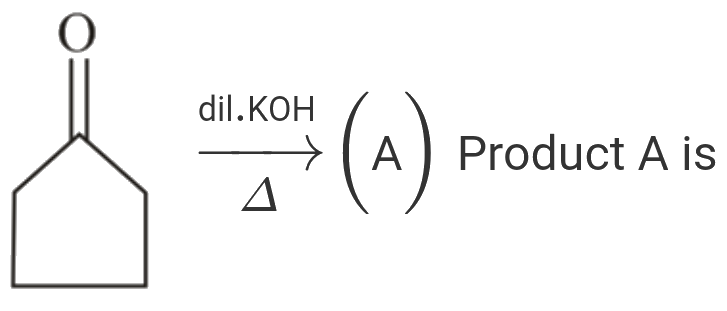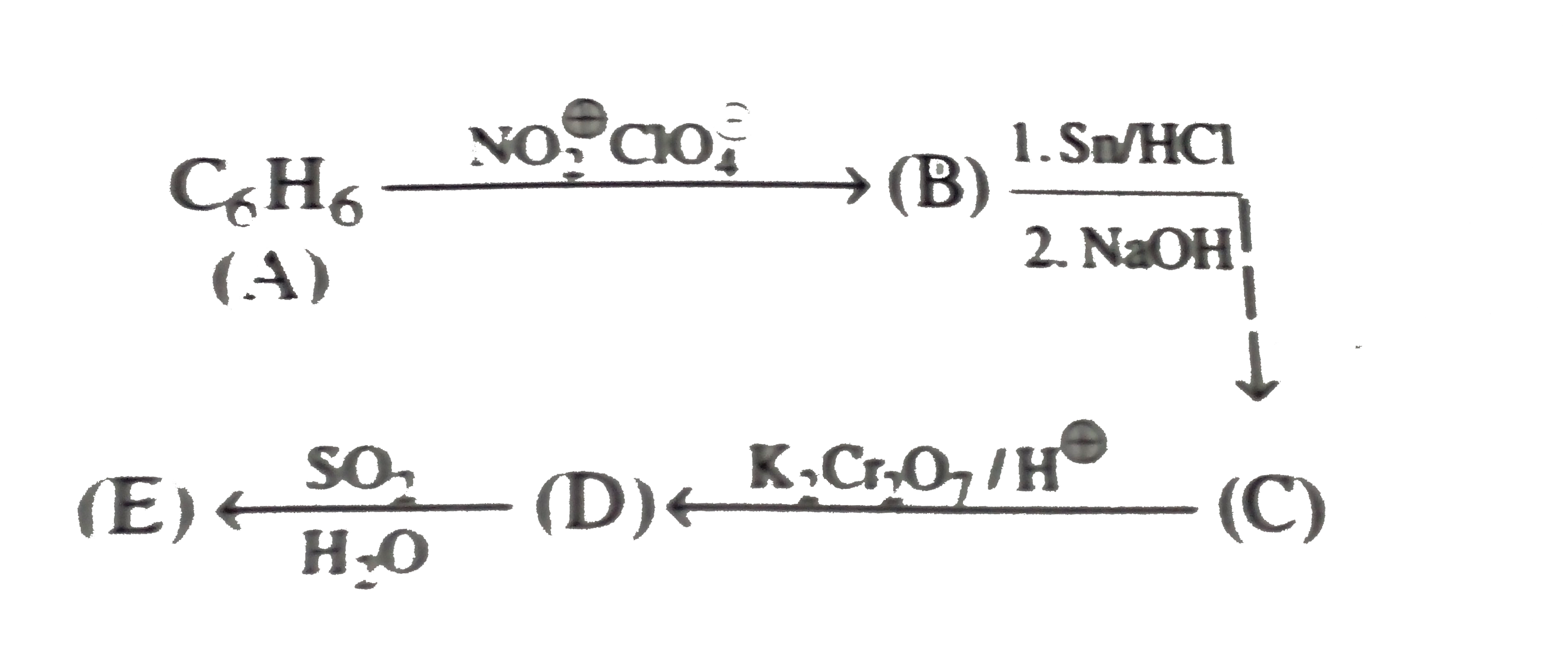Cyclobutylethe≠(A) Dil.H2SO4−−−−−−→ (B) (Number of isomeric products including stero-isomers)
To solve the problem of determining the number of isomeric products (including stereoisomers) formed when cyclobutyl ethene reacts with dilute H₂SO₄, we can follow these steps:
1. Identify the Structure of Cyclobutyl Ethene:
Cyclobutyl ethene consists of a cyclobutyl group attached to an ethene. The structure can be represented as follows:
CH2|CH2−CH−CH2|CH
2. Reaction with Dilute H₂SO₄:
When cyclobutyl ethene reacts with dilute H₂SO₄, it generates H⁺ ions. According to Markovnikov's rule, the H⁺ will add to the carbon atom with more hydrogen atoms, leading to the formation of a carbocation.
3. Formation of Carbocations:
The addition of H⁺ leads to the formation of a secondary carbocation at the carbon adjacent to the cyclobutyl group:
CH2∣∣CH2−C⁺−CH2∣∣CH
4. Carbocation Rearrangement:
The secondary carbocation can undergo a hydride shift to form a more stable tertiary carbocation:
CH2|CH2−C−CH2|CH3
5. Nucleophilic Attack by Water:
Water acts as a nucleophile and attacks the carbocation. This can happen at both the secondary and tertiary carbocations, leading to different products.
6. Formation of Products:
- From the secondary carbocation, we can form one product:
CH3|CH2−C−OH|CH2
- From the tertiary carbocation, we can form another product:
CH3|CH2−C−OH|CH2
7. Identifying Stereoisomers:
The products formed from both carbocations can have stereoisomers due to the presence of chiral centers. Each product can exist in two stereoisomeric forms (R and S configurations) because there are two chiral centers in the products.
8. Counting Total Isomers:
- From the secondary carbocation, we have one product with two stereoisomers.
- From the tertiary carbocation, we have another product with two stereoisomers.
- Therefore, the total number of isomeric products (including stereoisomers) is 5.
Final Answer:
The total number of isomeric products (including stereoisomers) formed is 5.
---
Cyclobutyl ethene consists of a cyclobutyl group attached to an ethene. The structure can be represented as follows:
CH2|CH2−CH−CH2|CH
When cyclobutyl ethene reacts with dilute H₂SO₄, it generates H⁺ ions. According to Markovnikov's rule, the H⁺ will add to the carbon atom with more hydrogen atoms, leading to the formation of a carbocation.
The addition of H⁺ leads to the formation of a secondary carbocation at the carbon adjacent to the cyclobutyl group:
CH2∣∣CH2−C⁺−CH2∣∣CH
The secondary carbocation can undergo a hydride shift to form a more stable tertiary carbocation:
CH2|CH2−C−CH2|CH3
Water acts as a nucleophile and attacks the carbocation. This can happen at both the secondary and tertiary carbocations, leading to different products.
- From the secondary carbocation, we can form one product:
CH3|CH2−C−OH|CH2
- From the tertiary carbocation, we can form another product:
CH3|CH2−C−OH|CH2
The products formed from both carbocations can have stereoisomers due to the presence of chiral centers. Each product can exist in two stereoisomeric forms (R and S configurations) because there are two chiral centers in the products.
- From the secondary carbocation, we have one product with two stereoisomers.
- From the tertiary carbocation, we have another product with two stereoisomers.
- Therefore, the total number of isomeric products (including stereoisomers) is 5.
The total number of isomeric products (including stereoisomers) formed is 5.
Topper's Solved these Questions
- ALCOHOL,PHENOL AND ETHERSBook:CENGAGE CHEMISTRY ENGLISHChapter:ALCOHOL,PHENOL AND ETHERSExercise:Solved Examples
Explore 17 Videos
- ALCOHOL,PHENOL AND ETHERSBook:CENGAGE CHEMISTRY ENGLISHChapter:ALCOHOL,PHENOL AND ETHERSExercise:Exercises Subjective
Explore 25 Videos
- ALIPHATIC AND AROMATIC ALDEHYDES AND KETONESBook:CENGAGE CHEMISTRY ENGLISHChapter:ALIPHATIC AND AROMATIC ALDEHYDES AND KETONESExercise:Archives Subjective
Explore 26 Videos
Similar Questions
Knowledge Check
Consider the following reaction sequence ,
CH3CH(OH)CH3ConcH2SO4−−−−−−−−→HeatXdil.H2SO4−−−−−−−−→H2OY
X and Y in the reaction respectively areACH3CH=CH2,CH3CH(OH)CH3BCH3CH=CHCH3,CH3CH2CH2OHCCH3CH2CH=CH2,CH3,CH2CH2OHDCH3CH2CH2CH3,CH3CH(OH)CH2CH3
 dil.KOH−−−−→Δ(A) Product A is
dil.KOH−−−−→Δ(A) Product A is
View SolutionCH3−C≡CHLinddar's−−−−→catalyst(A)ConcH2SO4−−−−−−→H2O(B)
What are the products (A) and (B) in the given reaction?
View SolutionIdentify the following compounds :
i. C6H6(A) 2H2SO4−−−−→ (B) 1.NaOH,540K−−−−−−−−−→2.HCI (C)
ii.
View SolutionThe product of following reaction is:
_2019_CBT4_E01_007_Q01.png) H2SO4(Cat.)−−−−−−−−→CHCl3
H2SO4(Cat.)−−−−−−−−→CHCl3
View SolutionComplete the following reactions:
Benzene(A) Ac2O−−−−→+AICI3 (B) (i)MeMgBr−−−−−−−→(ii)H3O(+) (C) Conc.H2SO4 (D) 1.BH3/THF−−−−−−−−−−→2.H2O2/O(−)H (E)
View SolutionCH3−CH3∣CH−NO2NaNO2+H2SO4−−−−−−−−−−−−→at0∘C(A). (A) is:
View SolutionCH3−O∣∣C−16O−H+R−18O−Hdil.H2SO4−−−−−→Δ
Major product.
Product of the reaction is
View Solution
_S01_475_Q01.png)